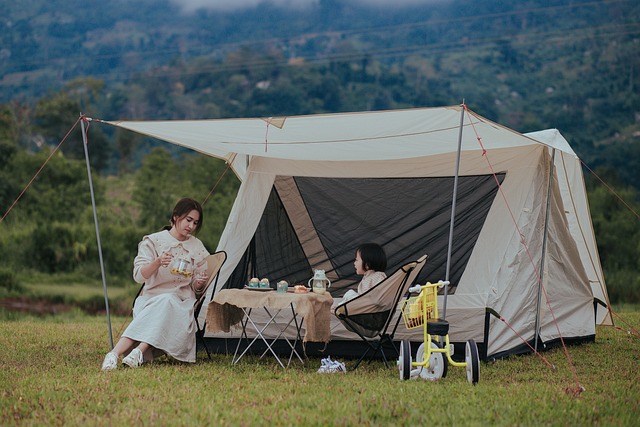Road Tripping
Camping on a Budget: How to Save Money on Your Next Trip
Camping is a fantastic way to reconnect with nature, enjoy the outdoors, and take a break from the hustle and bustle of daily life. However, like any other form of travel, the costs associated with camping can add up quickly if you’re not careful. The good news is that camping doesn’t have to be expensive. With a bit of planning and creativity, you can enjoy a budget-friendly camping trip without sacrificing comfort or fun. Here are some practical tips to help you save money on your next camping adventure.
1. Choose a Budget-Friendly Campsite
The first step to saving money on your camping trip is to choose a campsite that fits your budget. State and national parks often offer the most affordable camping options, with fees ranging from $10 to $30 per night. These sites typically provide basic amenities like restrooms, picnic tables, and fire pits, making them perfect for budget-conscious campers. If you’re open to more rustic experiences, consider dispersed camping on public lands, where you can camp for free or for a small fee.
2. Borrow or Rent Camping Gear
Investing in high-quality camping gear can be expensive, especially if you’re new to camping and don’t already own the essentials. Instead of buying everything upfront, consider borrowing gear from friends or family members who camp regularly. If borrowing isn’t an option, renting gear is another cost-effective solution. Many outdoor retailers, offer rental services for tents, sleeping bags, stoves, and other camping essentials. This allows you to try out different equipment before making a purchase for the items.
3. Pack Your Own Food and Cook at the Campsite
Eating out or purchasing pre-packaged meals can quickly drain your budget, so it’s best to pack your own food and cook at the campsite. Plan your meals ahead of time, and opt for simple, easy-to-cook recipes that require minimal ingredients. Foods like pasta, rice, canned beans, and fresh vegetables are affordable, easy to prepare, and can be stored without refrigeration. Don’t forget to bring reusable containers and utensils to reduce waste and save money in the long run. Cooking over a campfire or portable stove not only saves you money but also enhances the camping experience.
4. Use What You Already Have
Before purchasing any new gear or supplies, take stock of what you already have at home. Many household items can be repurposed for camping. For example, you can use an old yoga mat as a sleeping pad, kitchen pots and pans for cooking over the campfire, and blankets instead of sleeping bags. Even if you do need to buy some items, consider checking thrift stores or online marketplaces like Craigslist or Facebook Marketplace for gently used gear at a fraction of the cost.
5. Travel with a Group
Camping with a group of friends or family members is not only more fun but also more cost-effective. By splitting the cost of campsite fees, food, and other expenses, you can significantly reduce the overall cost per person. Additionally, group camping allows you to share gear and resources, such as tents, cooking equipment, and coolers, which can further cut down on costs.
6. Choose a Free or Low-Cost Activities
One of the great things about camping is that many activities you’ll enjoy are free or very inexpensive. Hiking, swimming, fishing, and stargazing are just a few examples of outdoor activities that don’t require spending money. Bring along some board games, cards, or a good book for entertainment during downtime. If you’re camping with children, nature scavenger hunts, storytelling around the campfire, and building forts with sticks and leaves are great ways to keep them engaged without spending a dime.
7. Plan Ahead and Book Early
Planning your camping trip well in advance can save you a lot of money. Campsites at popular destinations often fill up quickly, especially during peak seasons, and last-minute reservations can be costly. By booking early, you can secure a spot at a lower rate and avoid the risk of having to pay for a more expensive site or accommodations elsewhere. Additionally, planning ahead allows you to take advantage of discounts and special offers, such as early bird rates or off-season pricing.
8. Invest in Multi-Use Items
When shopping for camping gear, look for items that serve multiple purposes. For example, a multi-tool can replace several different tools, and a lightweight tarp can be used as a ground cover, rain shelter, or even as an extra layer of insulation under your tent. Investing in multi-use items reduces the amount of gear you need to buy, pack, and carry, ultimately saving you money and space.
9. Take Advantage of Loyalty Programs and Discounts
Many outdoor retailers, campgrounds, and travel websites offer loyalty programs, discounts, or rewards for repeat customers. Signing up for these programs can help you earn points, receive special offers, or access members-only discounts. Additionally, check for any available discounts, such as military, senior, or student rates, when booking your campsite or purchasing gear.
10. Practice Leave No Trace Principles
While this tip doesn’t directly save you money, practicing Leave No Trace principles helps protect the environment, ensuring that you and others can continue to enjoy the great outdoors for years to come. By minimizing your impact on the environment, you contribute to the preservation of natural spaces, which are often the most affordable and accessible places to camp.
Conclusion
Camping on a budget is entirely possible with a little planning and creativity. By choosing affordable campsites, borrowing or renting gear, packing your own food, and taking advantage of free activities, you can enjoy a memorable camping trip without breaking the bank. Remember, the key to a successful budget-friendly camping experience is to focus on the simple joys of being outdoors, spending time with loved ones, and embracing the beauty of nature. Happy camping!
